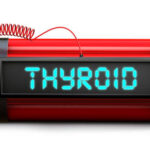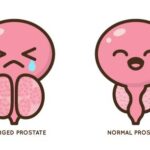Breast cancer is among the most common types of cancer affecting women globally, though men can also develop this disease. Understanding breast cancer symptoms and causes is vital for early detection and effective treatment. In this comprehensive guide, we will explore the key breast cancer symptoms to watch for and discuss the potential causes and risk factors associated with this disease.

Symptoms of Breast Cancer
Early detection of breast cancer significantly increases the chances of successful treatment. It’s essential to be aware of the common symptoms of breast cancer, as early signs can sometimes be subtle:
- Lump in the Breast or Armpit: One of the most common symptoms is the presence of a new lump or mass in the breast or underarm area. These lumps are often painless, though some may cause tenderness or discomfort.
- Change in Breast Size or Shape: Any unusual changes in the size, shape, or appearance of the breast should prompt an evaluation by a healthcare professional.
- Skin Changes: Be alert to any dimpling, puckering, or redness of the skin on the breast. Sometimes, these skin changes can resemble the texture of an orange peel, known as peau d’orange.
- Nipple Changes: Notice any changes in the nipples, such as inversion (where the nipple turns inward), unusual discharge (other than breast milk), or persistent pain in the nipple area.
- Swelling: Swelling of the entire breast or parts of it, even in the absence of a palpable lump, can be an indication of breast cancer.
- Persistent Pain: Continuous pain in the breast or nipple, unrelated to the menstrual cycle, should be checked by a healthcare provider.
Causes of Breast Cancer
Breast cancer develops from a complex interplay of genetic, environmental, and lifestyle factors. Understanding these factors can help in identifying individuals at higher risk:
- Genetic Factors: Inherited mutations in genes such as BRCA1 and BRCA2 greatly increase the risk of breast cancer. A strong family history of breast cancer is another significant risk factor.
- Age: The likelihood of developing breast cancer increases with age, with the majority of cases being diagnosed in women over the age of 50.
- Hormonal Factors: Extended exposure to estrogen, such as early onset of menstruation (before age 12), late menopause (after age 55), and hormone replacement therapy, can elevate the risk of breast cancer.
- Reproductive History: Women who have never been pregnant or who had their first child after age 30 may face a slightly higher risk of breast cancer.
- Lifestyle Factors: Obesity, lack of physical activity, alcohol consumption, and smoking have all been linked to an increased risk of breast cancer.
- Radiation Exposure: Previous radiation therapy to the chest area, particularly during childhood or early adulthood, can heighten the risk of developing breast cancer later in life.
Watch Our YouTube Video on Breast Cancer
For a more detailed discussion on breast cancer symptoms, causes, and preventive measures, make sure to watch our YouTube video. We delve deeper into this critical topic, offering valuable insights and tips for early detection and treatment.
Watch our video on Breast Cancer Symptoms and Causes here.
Subscribe to HerbeeLife – Health and Wellness
Stay updated with the latest health and wellness tips by subscribing to our YouTube channel, HerbeeLife – Health and Wellness. We regularly upload informative content on various health topics to help you lead a healthier and happier life.
Subscribe to HerbeeLife – Health and Wellness for more educational and life-saving videos.
By staying informed and proactive, we can all contribute to the early detection and successful treatment of breast cancer. Share this guide with your loved ones and encourage them to stay vigilant about their breast health.



